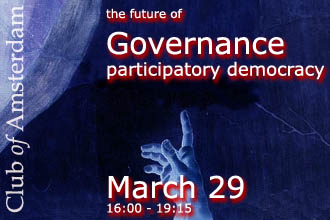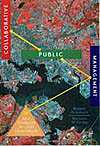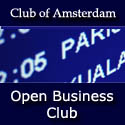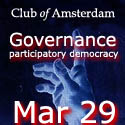
UN Global E-government

From E-government to E-inclusion
Executive Summary
An imperative of development today is to employ information and communication technologies (ICTs) to level the playing field for all. The cross-cutting nature of technology provides opportunities and enables delivery of much needed economic and social information to remote areas of the world with the promise of leapfrogging traditional development cycles. Access to information and communications is considered crucial for poverty reduction, since it contributes to new sources of income and employment for the poor, improved delivery of health and education services and competitiveness of the economy.
However, harnessing the full potential of the benefits of the global information society is possible only if all nations and the peoples of the world share this opportunity equally. Further, the existing spread of information technologies to a select group of people in the world is worsening disparities between the e-haves and the e-have-nots. There is a danger that far from fomenting cohesion through opportunity, unequal diffusion of technology will reinforce traditional inequalities leading to a further weakening of social bonds and cultural cohesion.
Exploring the interlinkages between e-government and human development, the UN Global E-Government Readiness Report 2005 presents an assessment of existing disparities in access to, and use of, ICTs around the world. It comprises two parts: Part I presents the UN Global E-Government Readiness Survey 2005, while Part II of the Report delves deeper into the access parameters of disparity.
According to the E-government Readiness rankings in 2005, the United States (0.9062) is the world leader, followed by Denmark (0.9058), Sweden (0.8983) and the United Kingdom (0.8777). As in 2004, the Republic of Korea, Singapore, Estonia, Malta and Chile are also among the top 25 e-ready countries. […]
Fifty-five countries, out of 179, which maintained a government website, encouraged citizens to participate in discussing key issues of importance, but only 32 Member States explained what e-consultation was, why it was important and where citizens should provide inputs to the government, while only 28 countries gave the assurance that the government would take citizens’ inputs into the decision-making process. […]
E-government appears to have a strong relation with income per capita. Resource availability appears to be a critical factor inhibiting e-government initiatives in many countries. Part of the reason for the high e-readiness in most of the developed economies is past investment in, and development of, infrastructure. […]
A serious access-divide exists across the world between the developed and the developing countries. Of particular concern are the countries belonging to the regions of South and Central Asia and Africa which, together, house one-third of humanity. Africa, as a whole, had a mean e-government readiness at two-thirds of the world average and 30% of North America. Many of the 32 least e-ready countries, which belonged to Africa, showed little relative progress in 2005, compared to other countries many of which were far more advanced than Africa in their outreach and access to citizens. […]
The Socially Inclusive Governance for Information Society Framework is a ‘vision’ for restructured thinking about developing an inclusive information society based on the appreciation of the capabilities of each and every person; the dignity that economic and social choice brings; and the freedom to partake it all. […]
Recommendations
The first imperative is to recognize the importance of providing equal opportunity for participation in the information society. Governments need to fully understand the vast potential of ICTs as a tool and the benefits and opportunities that can accrue in the current age if ICTs are effectively applied to human development.
Second, commitment and leadership for an ICT-led development agenda for equality is a prerequisite. This requires a political commitment to ensure that each step taken towards meeting the goals and objectives of the country is inclusive of the values of the majority of the society, including those at the fringes.
Third, there is need for a vision to develop a socially inclusive development strategy, which aims at the empowerment of each according to his/her capabilities. A vision which is grounded in the reality of the national level of development, availability of physical and human infrastructure and financial resources should allow for the setting of objectives for the economy and society in a way that reorients and maximizes the public value.
Fourth, a country needs to have a resolve, to harness the potential of the information society. The policies and programmes of the government need to be restructured with the role of ICTs blended, and integrated, into governance systems and development plans.
Fifth, the formulation of a development strategy based on effective and indigenously appropriate utilization of the ICTs in each sector is required so that the market, the government and the citizen have a mutually beneficial and equitable role to play. This needs rethinking the interaction between the state and the citizen towards a partnership, which actively promotes participatory decision-making. It includes redefining institutions, processes and mechanisms whereby information is supplied and information is demanded. Governments need to formulate a national strategy based on a realistic diagnosis of the economic, financial, and human resource availability, and of the infrastructure, human capital, financial and social needs required to attain the objectives – but a strategy based on the holistic concept of e-inclusion and actively aimed at promoting access for all.
Read the full report – click here
Creative Leadership

Summit for the Future 2006 May 3-5
from the program ….
Interdisciplinary Stream:
Creative Leadership
Societies change and social needs evolve. We try to understand these changes with reference to paradigms such as the litigious society, the information society, the blame society, the knowledge society, the risk society. Societies need leaders and their demands of leaders evolve too. Models of leadership include not only visionary and representational leadership but forms of leadership that are collaborative, generative and collective. Until now the relationship between the leader and the lead has seldom been a mature one. Leaders are parts of a system. They cannot be all-knowing, they cannot work alone and their leadership may be short-lived. What kind of leadership is required by societies that have re-learned how to live and prosper with risk?
Peter Merry, Evolutionary Change Facilitator, Partner, Engage! InterAct, Co-Director, Center for Human Emergence (Netherlands)
Evolutionary Leadership : creativity for emergence
At this time when the old systems are proving inadequate to new problems and the new solutions have not emerged yet, a particular kind of leadership is being called for. Letting go, letting come; sitting in the chaos and paying attention to signs of new order; insight into the interconnectedness of all things and compassion for all life. What are the new maps that help us to make sense of the emerging landscape? And who are we being called to become?

George Pór, Founder, CommunityIntelligence Ltd.
Collective Intelligence and Collective Leadership
Galloping complexity and the deepening global interdependence of our organizational and societal challenges, created an unprecedented demand for boosting collective intelligence (CI) at every level. Organizations can succeed only if they learn to upgrade and mobilize their collective intelligence. CI is the capacity of human communities to evolve towards higher order complexity and integration through collaboration and innovation. Upgrading current organizational CI to “CI 2.0” will result in new forms of collective leadership, such as leadership councils and leadership communities of practice.

Moderated by Erika Stern, Utrecht School of Governance
Club of Amsterdam blog
 | Club of Amsterdam blog October 26: Synthesis of elBulli cuisine October 14: The new Corinthians: How the Web is socialising journalism September 20: A Future Love Story |
News about the future of Governance

eGovernment Good Practice Framework
The Good Practice Framework is being developped with the support of the Modinis Programme of the European Commission. It contributes to the i2010 Information Society initiative.
The database is the core element of the Good Practice Framework.
Its central features are easy access by Internet, for collecting data and input by the Case owners. After the case has been documented, a series of checks will be performed. The quality of the information will be carefully controlled through internal procedures. If offensive material is discovered in any of the entries the respective case will be deleted and the case owner notified by e-Mail. The responsibility for the accuracy and correctness of the information will however remain with the case owner.
The database consists of a description template tailored in order to collect, in a standardised way, all the information needed to make a case easily retrievable. To this end, a set of key themes have been identified and questions will allow contributors to quickly and easily fill in information about their case.

Society for promotion of e-governance in India
The society promotes good/transparent practice, enhances sharing of learning experiences, dissemination of information and management of knowledge in electronic government (eGovernment) and electronic democracy (eDemocracy) amongst various human and institutional networks and communities of interest in the Asia Pacific Region and beyond.
News about the Future

Warbling whales speak a language all their own
The songs of the humpback whale are among the most complex in the animal kingdom. Researchers led by an MIT graduate student have now mathematically confirmed that whales have their own syntax that uses sound units to build phrases that can be combined to form songs that last for hours.
“Humpback songs are not like human language, but elements of language are seen in their songs,” said Ryuji Suzuki, a graduate student in the Harvard-MIT Division of Health Sciences and Technology. Suzuki, who is also a Howard Hughes Medical Institute (HHMI) predoctoral fellow in neuroscience at MIT.

Toy Robot
The BUTTERSCOTCH pony will amaze kids and adults alike with her level of “awareness” and realism. She can move her head up and down, and back and forth, and her eyes open and close. Sensors enable BUTTERSCOTCH to respond and interact with the child. When her mane is brushed, a child will hear contented whinnies. When her ears are tickled, she will turn her head and try to find you. When she gets hungry, she’ll happily “eat” her very own carrot. And, when she’s had enough, she’ll shake her head to let you know she’s full. Petting her muzzle will cause her to sniff!
Next Event: Wednesday, March 29, 16:30-19:15

the future of Governance
participatory democracy
Wednesday, March 29, 2006
Registration: 16:00-16:30, Conference: 16:30-19:15
Where: Info.nl, Sint Antoniesbreestraat 16, 1011 HB Amsterdam [next to Nieuwmarkt]
With
Joop de Wit, Institute of Social Studies: Managing the Indian Metropolis:
New Forms of Governance in Mumbai and Delhi
Oebele Bruinsma, Synmind bv:
Order from Chaos
Wybren Meijer & Pieter Pijlman, Futureconsult:
Scenarios on Local Governance and Participatory Democracy – Method and Outcomes
and our Moderator John Grüter, Systems Thinker, ICT Generalist, Technology Affectionado, Change Agent, Principal, Digital Knowledge
Summit for the Future blog
 | Summit for the Future blog http://summitforthefuture.blogspot.com July 13: Summary of the Summit for the Future 2006 May 22: Dispatches from the Frontier |
Recommended Book

Collaborative Public Management
by Robert Agranoff, Michael McGuire
Local governments do not stand alone – they find themselves in new relationships not only with state and federal government, but often with a widening spectrum of other public and private organizations as well. The result of this re-forming of local governments calls for new collaborations and managerial responses that occur in addition to governmental and bureaucratic processes-as-usual, bringing locally generated strategies or what the authors call “jurisdiction-based management” into play.
Based on an extensive study of 237 U.S. cities within five states, Collaborative Public Management provides an in-depth look at how city officials work with other governments and organizations to develop their city economies and what makes these collaborations work. Exploring the more complex nature of collaboration across jurisdictions, governments, and sectors, Agranoff and McGuire illustrate how public managers address complex problems through strategic partnerships, networks, contractual relationships, alliances, committees, coalitions, consortia, and councils as they function together to meet public demands through other government agencies, nonprofit associations, for-profit entities, and many other types of nongovernmental organizations.
Beyond the “how” and “why,” Collaborative Public Management identifies the importance of different managerial approaches by breaking them down into parts and sequences, and describing the many kinds of collaborative activities and processes that allow local governments to function in new ways to address the most nettlesome public challenges.
O2 sustainability
China’s Future, Your Strategy

by Rohit Talwar, CEO, Fast Future
Could 2006 be the year when individuals, companies and governments across the planet will start to embrace the likely breadth, depth and style of long-term impact China could have on everything from investment flows through to scientific research and voting models for the United Nations?
I’m in the midst of writing a book on China’s future and thought I’d take the opportunity to draw on the interviews and research to date to share some of the key views emerging. In the thought piece below I’ve tried to outline some of the key perspectives emerging on China’s future and posed a series of critical starter questions for those charged with developing China Strategies for their organisations.
A Nation on the Move
The question should not really be “why take notice now?” – but rather “Why have you taken so long?” Wherever one looks, the evidence is inescapable that China is a country on a rapid development path. When reviewing official statistics, government plans, investment commitments, analyst projections and company forecasts, three key macro drivers emerge:
| 1. China’s growing economic power and presence in global markets 2. Development of domestic consumption 3. An increasing capacity for innovation |
| A number of key trends and long term plans underpin these macro drivers, for example: |
| China has experienced a period of prolonged GDP growth – reaching 9.9% in 2005. In 2000 China set a goal of raising GDP from one trillion (US dollars) to four trillion by 2020. Current estimates suggest this could be achieved as early as 2015Continued economic growth is estimated to have taken over 200 million Chinese people out of poverty in the last 20 yearsIn 2004, per capita income in China was $1290 – compared to $41,400 in the USAA goal has been set of achieving technological self-sufficiency within 15 yearsChina plans to spend $17.4Bn constructing airports in the next five years and predicts that its aircraft fleet will rise from 863 today to 1580 by 2010 and 4000 by 2020China’s share of world exports is due to rise from 6% to 10% by 2010China’s luxury goods market is forecast to grow 10%-20% annually until 2015 – overtaking the USA to become either the largest market (Goldman Sachs) or second largest (Ernst & Young) after Japan, with 29% of total world luxury salesBy 2020 the Chinese middle class is forecast to double to over 40% of the 1.3 Bn population e.g. 520M people – almost twice the size of the USA. |
| […] Conclusions Faced with these differing perspectives, for those responsible for China, the priority should be to focus on accelerating the internal learning process, with the aim of answering at least the following five questions: |
| What are the size, shape and outlook for our sector in China?What are the relevant government plans and policies that apply to the sector?What are the broader ‘environmental’ factors that could affect our business and our ability to operate in future?What have we learned from our own experience in China? / Who do we know with experience of the China market that we can learn from?How do we create a learning dialogue on China inside the organisation? |
| There may be an understandable temptation to start with an analysis of competitor activity in China. However, a broader analysis of the market and operating environment may provide useful lenses through which to assess competitor actions. Entering the Chinese market may feel like trying to mount a moving train while blindfolded. Developing early insight may just free up one eye! You can read the full article click here |
Announcements
 | ||
 Lezing en dialoog met Andrew Cohen Evolutionaire Verlichting: Spiritualiteit voor de 21ste eeuw Amsterdam dinsdag, 28 maart tijd: 20.00 uur plaats: Beurs van Berlage, Damrak 243 telefoon: (020) 422 1616 | ||
 “Klaar om te wenden?” Herman Wijffels, Ervin Laszlo, Don Beck & Peter Merry met Marianne de Jager: de Koers van Nederland vrijdag 31 maart 19.30 uur spectaculaire samenkomst in deFabrique, Maarssen €75 / studenten €25 www.klaaromtewenden.nu |
Agenda
| NEW: .Our Season Events are Wednesdays 16:30! | |
| 16:00-16:30 Registration 16:30-17:45 Part I: Presentations 17:45-18:15 Break: Drinks and evtl. live music 18:15-19:15 Part II: Discussion | |
| Club of Amsterdam Season Events 2005/2006 | |
| Wednesday, March 29, 16:30 | the future of Governance |
| .Apr 26 | the future of Drugs & Pharma |
| .May 31 | the future of Reputation Management |
| .Jun 28 | the future of Journalism / Ethics in Journalism |
Club of Amsterdam Open Business Club
 | Club of Amsterdam Open Business Club Are you interested in networking, sharing visions, ideas about your future, the future of your industry, society, discussing issues, which are relevant for yourself as well as for the ‘global’ community? The future starts now – join our online platform … |









Customer Reviews
Thanks for submitting your comment!